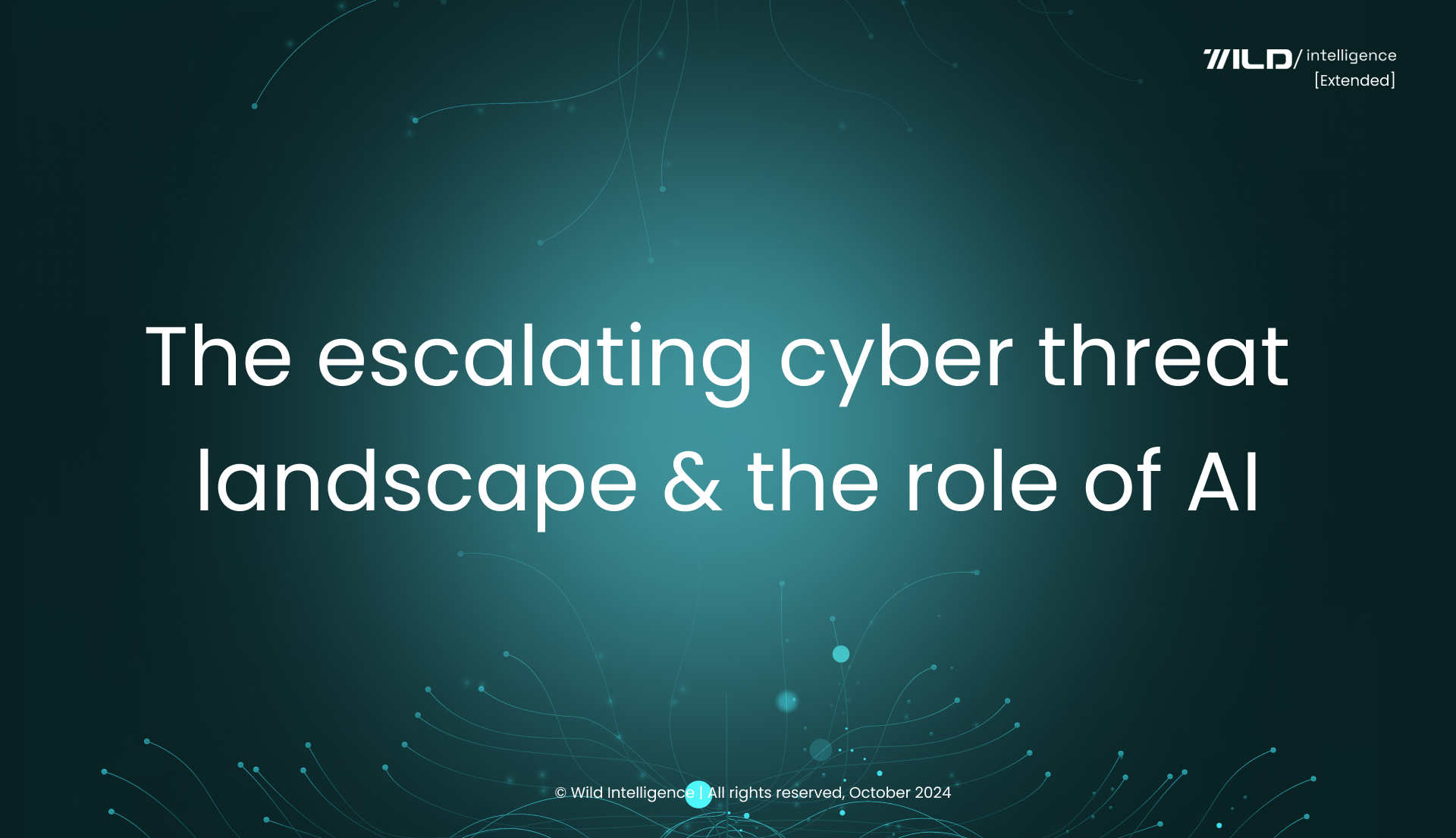The escalating cyber threat landscape and the role of AI
Hello,
Imagine a world where cyberattacks are not just isolated incidents but a relentless storm, constantly battering the defenses of organizations worldwide.
This is the reality we face today.
The digital realm has become a battleground where malicious actors, armed with increasingly sophisticated tools and techniques, relentlessly probe for weaknesses.
Traditional security measures, once considered adequate, are now struggling to keep pace with the evolving threat landscape.
Enter AI, a technological marvel that offers both immense promise and potential peril.
While AI holds the key to bolstering cyber defenses and enabling proactive security, it is also being weaponized by adversaries, giving rise to a new generation of threats.
This double-edged sword presents a critical challenge:
How can we harness the power of AI for good while mitigating its potential for harm?
This question lies at the heart of our exploration into the escalating cyber threat landscape and the crucial role AI plays in shaping the future of cybersecurity.
Is your organization AI safety ready?
Traditional safety vs. the rise of AI-powered threats
The case for traditional safety:
While AI-powered threats are a growing concern, traditional security measures remain essential.
Firewalls, intrusion detection systems, and antivirus software still provide a valuable first line of defense against many common attacks.
These measures are well-established, understood, and readily available, offering a cost-effective way to mitigate basic cyber risks.
Moreover, human expertise remains crucial in cybersecurity.
Experienced security professionals can identify patterns, analyze anomalies, and respond to incidents in ways that AI systems currently cannot.
The human element is essential for interpreting complex threats, adapting to novel situations, and making informed decisions based on experience and intuition.
The case against traditional safety:
The cybersecurity landscape is rapidly evolving, and traditional security measures are struggling to keep pace.
The sheer volume and sophistication of modern cyberattacks, particularly those powered by AI, overwhelm traditional defenses.
AI-powered attacks can adapt to security measures, exploit zero-day vulnerabilities, and evade detection by traditional systems.
Furthermore, the increasing reliance on interconnected systems and the explosion of data create a vast attack surface that traditional security struggles to protect.
Human analysts simply cannot keep up with the volume and velocity of data generated by modern networks, making it challenging to identify and respond to threats in real time.
The verdict:
While traditional security measures still have a role to play, they are no longer sufficient in the face of evolving threats.
AI-powered attacks demand a new approach, one that leverages AI for proactive defense, automated response, and continuous adaptation.
Organizations must invest in AI-driven threat intelligence solutions, enhance their cybersecurity infrastructure, and foster a culture of cybersecurity awareness.
By embracing AI for security and prioritizing ethical considerations, organizations can navigate the complex threat landscape and build a more resilient and secure future.
The future of cybersecurity:
The future of cybersecurity lies in a synergistic approach that combines traditional security's strengths with AI's power.
This involves:
Augmenting human expertise with AI:
Leverage AI to automate routine tasks, analyze vast amounts of data, and identify patterns humans might miss. This frees up human analysts to focus on strategic decision-making and complex threat analysis.Developing adaptive security systems:
Build AI-powered security systems that can learn and adapt to evolving threats. This involves using machine learning to identify new attack patterns, predict emerging threats, and continuously update security measures.Prioritizing ethical AI development:
Ensure that AI systems are developed and used responsibly, ethically, and transparently. This includes mitigating bias, promoting fairness, and protecting privacy.
By embracing this integrated approach, organizations can harness the power of AI to enhance their security posture and build a more secure digital future.
Case study: The NotPetya Attack on Maersk
In 2017, the NotPetya ransomware attack crippled the global shipping giant Maersk, causing an estimated $300 million in damages.
This attack demonstrated the devastating potential of AI-powered malware, capable of spreading rapidly and disrupting critical infrastructure.
The severity of the impact was contributed to by Maersk's reliance on outdated security systems and lack of preparedness for AI-driven threats.
Insights:
AI-powered attacks can cause significant financial and operational damage to even large, well-established companies.
Traditional security measures are often inadequate against sophisticated AI-driven threats.
Proactive threat intelligence, leveraging AI for early detection and response, is crucial for mitigating such risks.
Relevant uses:
Early threat detection, vulnerability identification, and automated incident response.
AI can analyze network traffic patterns, identify suspicious activities, and automatically trigger security alerts.
Related study reference:
"The Malicious Use of Artificial Intelligence: Forecasting, Prevention, and Mitigation" by Future of Humanity Institute, Oxford University. This study provides a comprehensive overview of the potential malicious uses of AI and proposes strategies for prevention and mitigation.
Conclusion
The Maersk case study is a stark reminder that no organization is immune to cyberattacks.
Decision leaders must prioritize investment in AI-driven threat intelligence solutions to defend against evolving threats proactively.
This includes fostering a culture of cybersecurity awareness, implementing robust security protocols, and continuously adapting to the changing threat landscape.
By embracing AI for security and adhering to secure coding practices, organizations can strengthen their defenses and mitigate the risks posed by AI-powered attacks.
But the question remains: Are we prepared to face the evolving threat landscape and harness AI's power for a more secure future?
The answer lies in our willingness to embrace innovation, adapt to change, and prioritize security as a strategic imperative.
By investing in AI-powered threat intelligence, fostering a culture of cybersecurity awareness, and adhering to ethical principles, we can navigate the complex challenges ahead and build a more secure digital world.


